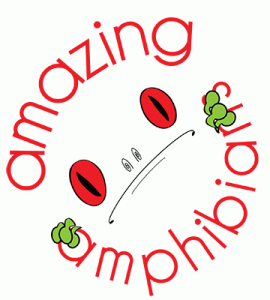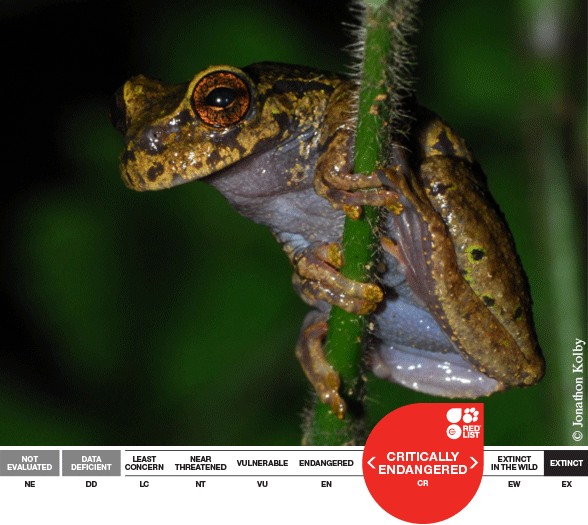 Plectrohyla dasypus, sometimes known as the Spike-thumb Frog, is listed as ‘Critically Endangered’ on the IUCN Red List of Threatened Species. This frog species lives in a single fragment of montane rainforest within Parque Nacional Cusuco, Departamento de Cortés in northern Honduras. This threatened cloud forest habitat covers approximately 200km2 and ranges in altitude from 500-2200m; within that range, P. dasypus is present only in the core zone of the park from 1,410-1,990m. Plectrohyla dasypus is a stream-associated species and can be found on low vegetation along stream and river margins when they emerge to forage at night. Occasionally, they can also be found in bromeliads.
Plectrohyla dasypus, sometimes known as the Spike-thumb Frog, is listed as ‘Critically Endangered’ on the IUCN Red List of Threatened Species. This frog species lives in a single fragment of montane rainforest within Parque Nacional Cusuco, Departamento de Cortés in northern Honduras. This threatened cloud forest habitat covers approximately 200km2 and ranges in altitude from 500-2200m; within that range, P. dasypus is present only in the core zone of the park from 1,410-1,990m. Plectrohyla dasypus is a stream-associated species and can be found on low vegetation along stream and river margins when they emerge to forage at night. Occasionally, they can also be found in bromeliads.
 |
There has been an 80% population decline of P. dasypus over the past ten years that can be closely linked to the presence of amphibian chytrid fungus, Batrachochytrium chytridiomycosis. Annual surveys from 2007 to present have shown that the majority of the population is infected. Chytrid frequently causes oral deformities in P. dasypus tadpoles, producing eroded jaw sheaths and gaps in tooth rows. Chytrid appears to cause the greatest mortality in recently metamorphosed frogs (very young adults) and this is likely to have a strong negative effect on recruitment of adults. This species is also threatened by degradation in the quality and extent of habitat due to a recent severe increase in illegal deforestation within the national park where it lives.
As this frog species is found nowhere else in the world and chytrid fungus is found throughout its habitat, establishing captive populations will be very important for its survival. The ‘Honduran Amphibian Rescue and Conservation Center’ is a new effort supported by a 2012 Amphibian Ark Seed Grant that will combat the decline of P. dasypus and two additional Critically Endangered amphibian species facing similar threats. In this program, tadpoles and froglets will be collected from the wild, treated for any chytrid fungal infections and raised in a controlled environment in a disease-free facility, and reintroduced back into the wild as healthy adult frogs. To find out more about these efforts check out this pdf to read their full project proposal.
Submit your observations of this species to iNaturalist and they will appear on this map. Learn more about this species on Amphibiaweb.
More Amazing Amphibians here.
Produced in partnership with:
 |
||
 |
 |
 |
 |
 |
 |
If your organization would like to be involved with the Amazing Amphibians program please email: amazing@amphibians.org.







